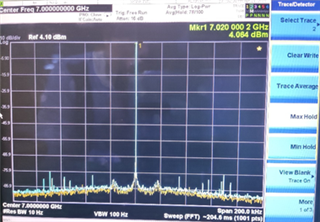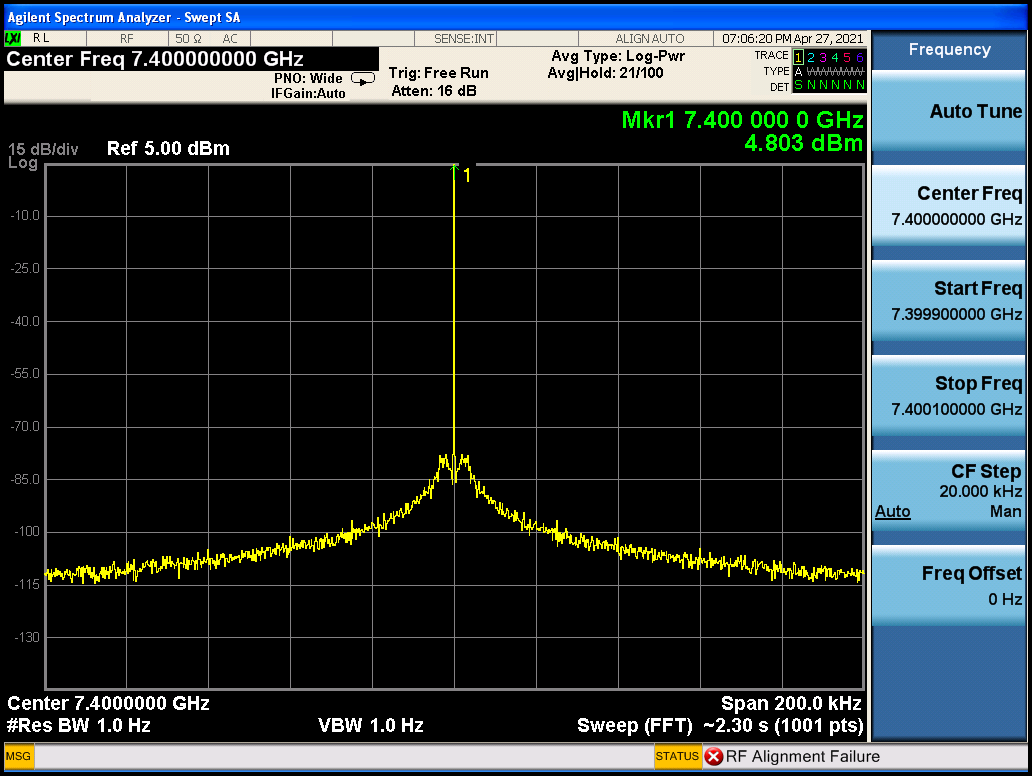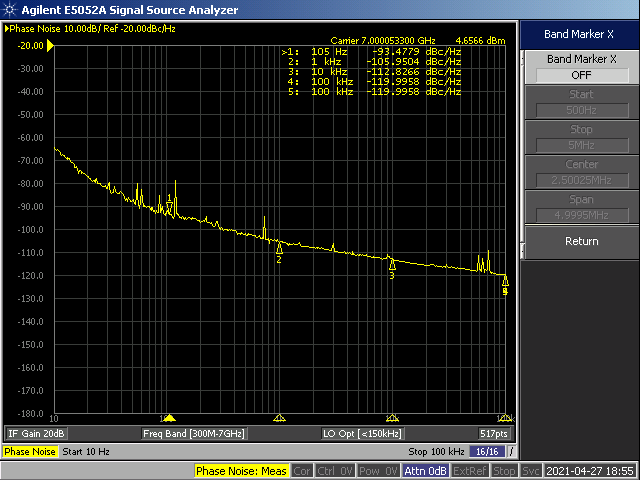Other Parts Discussed in Thread: LMX2820, , USB2ANY
Problem Description
In our application of LMX2820 evaluation board, we found a series of spurious signals that are very close to the dominant frequency (see Figure.1, Figure.2)
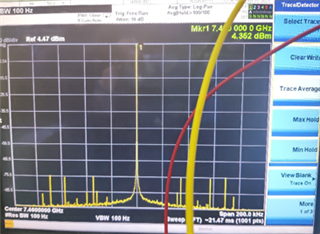
Figure.1 7.4GHz output frequency, with 370MHz as reference input and N=20.
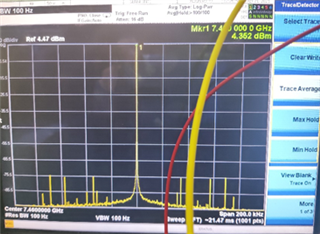
Figure.2 7.5GHZ output frequency, with 375MHZ as reference input and N=20.
In the figures above, when span is set to 200kHz and Res BW is set to below 100Hz, there are obvious spurious signals which should not be considered as phase noise (But in Noise spectrum mode they may seem like noise jitter) near the dominant frequency.
To find why the problem appears, we hold two spectrum traces of different output frequency in the same window (see Figure.3).

Figure.3 yellow trace is 7GHz and blue trace is 7.02GHz.
We can find that the frequencies and amplitudes of the spurious signals are approximate equal between the two traces so that we consider to change the input reference source from the signal generator —— KEYSIGHT N5183B. (see Figure.4).
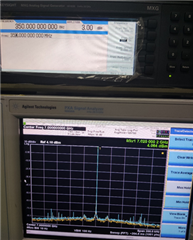
Figure.4 the same output frequencies with N5183B.
Apparently, the situation is not changed so that we can take no account of the influence of the input reference source.
Then we consider the influence of power source so we replace IT6302 with IT6322 and other power source. (see Figure.6). The Figure.5 is configuration in the software.
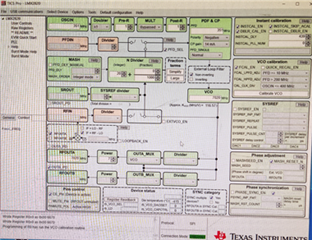
Figure.5 Parameter configuration.
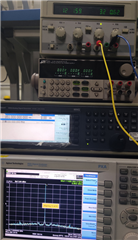
Figure.6 different power source with same frequency
The traces also overlap though the power source is replaced with some other power supply.
In summary, we can generally deem that the problem may be caused by LMX2820 evaluation board, or due to our lab’s reason, can’t provide more ideal testing condtion.
I wander, if the in band spur is caused due to the LMX2820 chip itself or our own reason? Can you repeat a trial in your own lab, such as, input a 350MHz or 100MHz signal as reference, and lock to any integer output frequency, then help to check if there are in band spurs, thanks.


